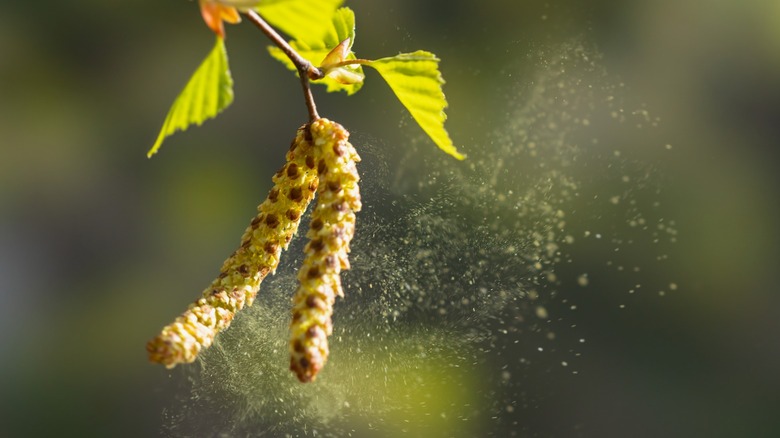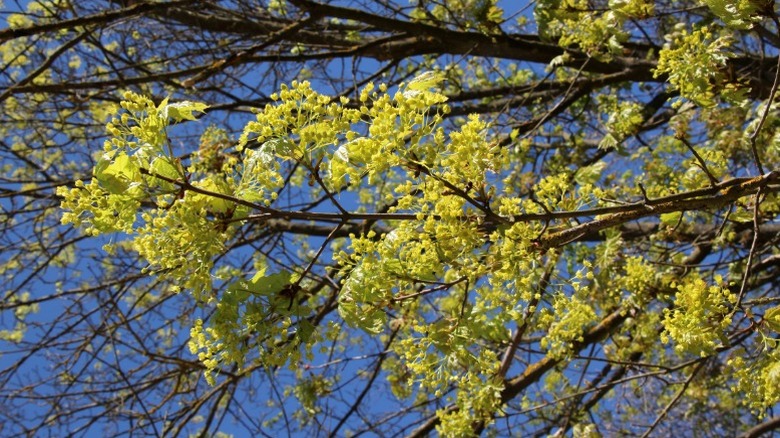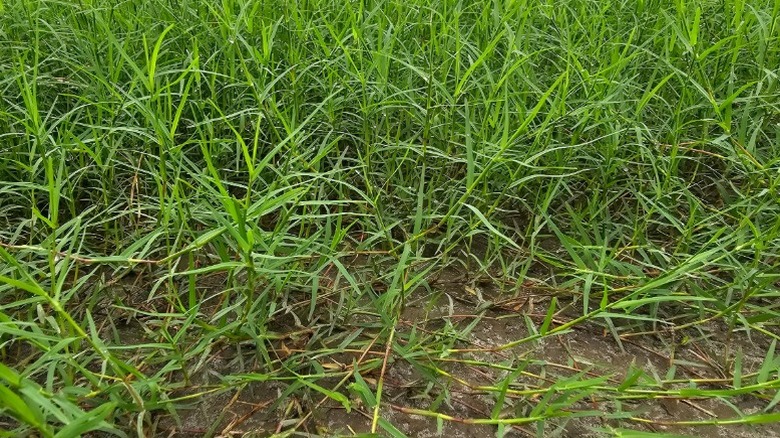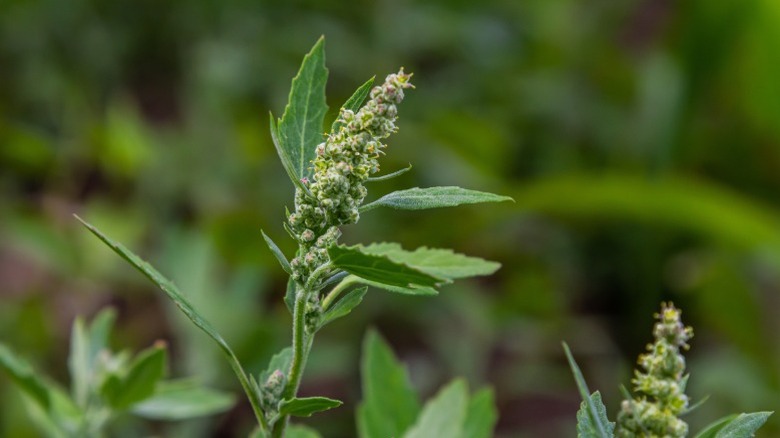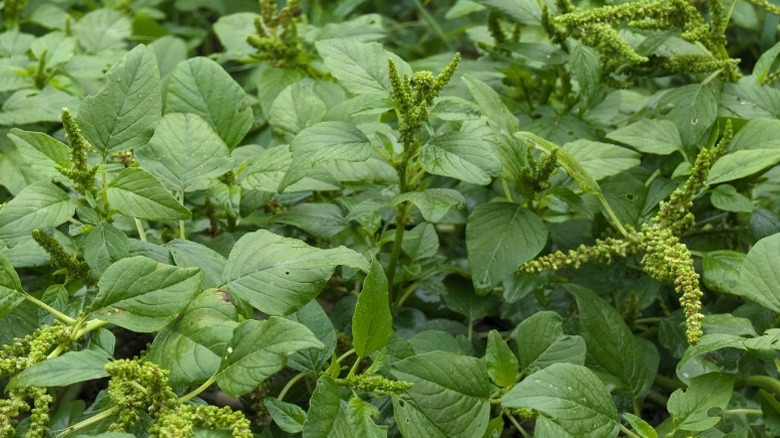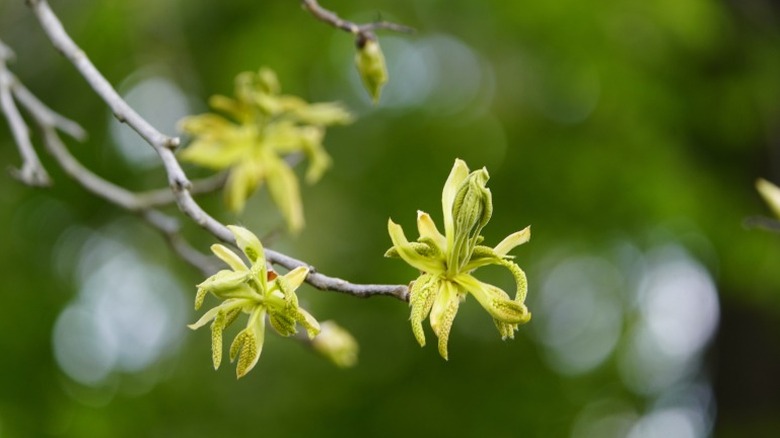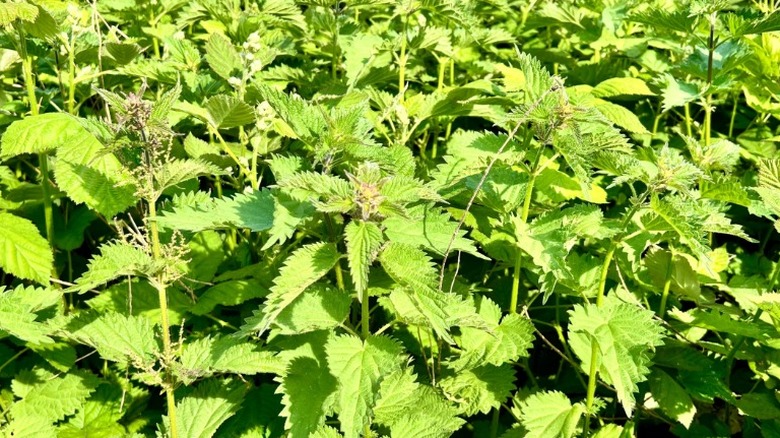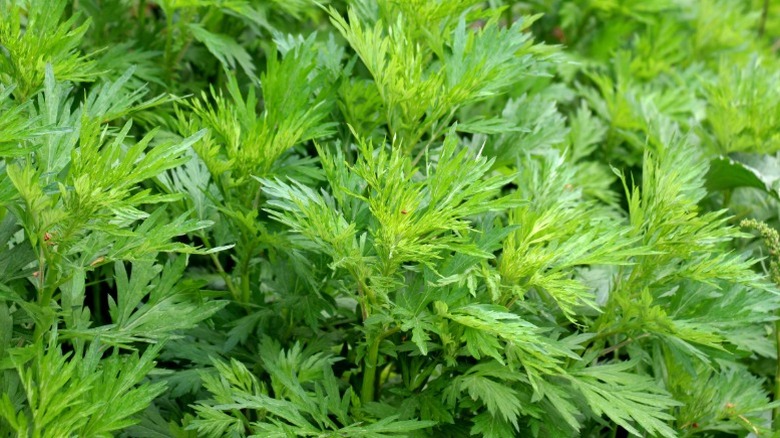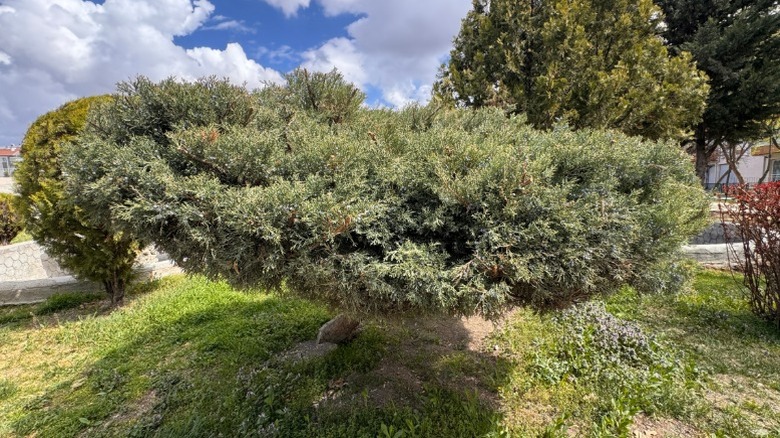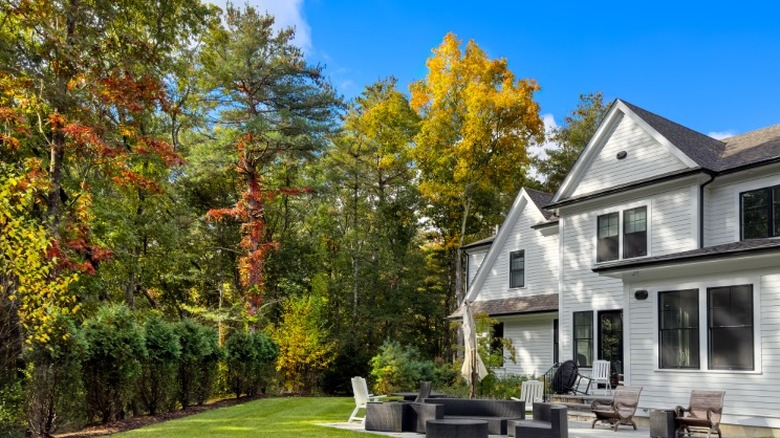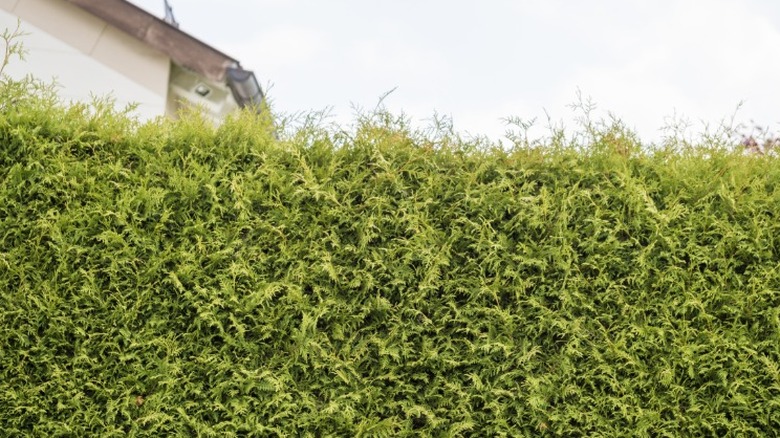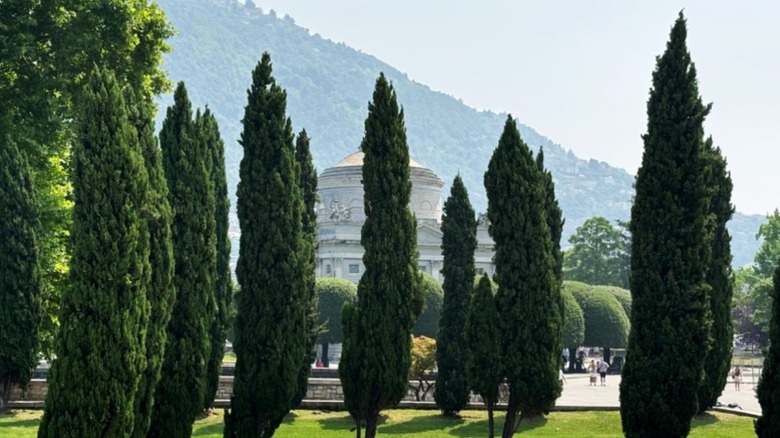12 Plants That Are Making Your Seasonal Allergies Worse
Next time you develop itchy, watery eyes and a stuffy nose, you might want to stop blaming all green things. Seasonal allergies, while annoying, are not caused by all plants or even all plants that produce pollen. The true menace is something called windborne pollen. Not all plants reproduce by expelling pollen, which means there are many plant species that are fairly safe for allergy sufferers. For example, species pollinated via insects produce smaller quantities of pollen, which is not likely to disperse into the air. Therefore, it's often plants that are wind-pollinated that make your allergies worse. Avoid growing certain trees, like oak and sycamore, many types of ornamental grass, and other pollen-producing plants on your property.
Pay attention before choosing new plants for your landscape. You can find many plants that are friendlier for people who experience the ill effects of seasonal allergies. For example, plants with separate female cultivars help you avoid wind-borne pollen. Make gardening easier by knowing what plants can be allergy triggers and considering whether you should plant an allergy-friendly garden. The first step is recognizing the species of plants that will definitely make your allergies worse. Many plants with potentially allergenic pollen are ranked using a handy scale called the Ogren Plant-Allergy Scale (OPALS), which will be referenced here.
The first tree to produce pollen each spring
Early on in the growing season, maple (Acer spp.) trees will bring beautiful flowers, but also an influx of pollen. Be prepared for this flowering tree that brings romance to your yard to also tickle your nose. Maple trees mainly reproduce via wind pollination. And for those who suffer from allergies, maple trees are often the first tree to herald the beginning of allergy season. Pollen put out by maple trees is yellow in color and can be seen on the ground after it's been released each year.
Noxious ragweed often triggers hay fever
Later on, as summer begins to fade, common ragweed (Ambrosia artemisiifolia) and giant ragweed (Ambrosia trifida) are two of the prime culprits of wind-borne pollen. Millions of pollen grains blow off ragweed from late summer into autumn. This pollen is especially harmful to individuals susceptible to hay fever. Common ragweed has fern-like leaves and grows as a bush, while giant ragweed is often much taller with finger-like leaves. Ragweed is also similar in appearance to goldenrod in its early stages. Goldenrod, however, is insect-pollinated instead of wind-pollinated.
Many types of turfgrass grown on lawns are a risk
Unfortunately for people who suffer from seasonal allergies, bermudagrass (Cynodon dactylon), bluegrass (Poa annua), fescue (Festuca arundinacea), and perennial ryegrass (Lolium perenne) are all examples of grasses that release wind-borne pollen in spring to early summer. Bermudagrass sheds pollen all year, especially in warm areas. The good news when it comes to bermudagrass is that proper management, including regular mowing, should keep flowering to a minimum (as well as pollen production). An unmaintained lawn, however, is a harbinger of serious allergens.
Lambsquarters can be a problem in your yard
A common weed, lambsquarters (Chenopodium album) is typically not a welcome sight. Producing air-borne pollen that causes allergic reactions, some species of lambsquarters are also poisonous. This plant causes trouble for individuals with allergies in the summer after it flowers, although removing flowers can limit the spread of pollen and seeds. Try to find a species with separate male and female plants, selecting only female ones for best results. Foragers might be happy to find lambsquarters due to its tasty leaves, but those with allergies should stay away.
Pigweed is a fast-growing, pollen-filled weed
Pretty flowering pigweed (Amaranthus spp.) comes in over 60 species, with many weeds and ornamental varieties. After flowering in the summer, you should be wary of pigweed plants. The release of pollen grains leads to seasonal reactions for those sensitive to pollen. Pigweed prolifically spreads via thousands of seeds it releases, which also means it puts out plenty of allergenic pollen. Because some varieties are showy, they can be grown deliberately in gardens.
Lightweight pollen of hickory trees travels far
The mighty hickory (Carya spp.) is a nut tree that will bring a bountiful harvest to your yard, but you first need to contend with its pollen production and 8 OPALS rating. Hickories produce tiny grains of pollen that blow away in the wind. Grains produced by hardwood trees, like hickories, are also rough in texture and more irritating. Hickory trees carry both male and female flowers on the same tree, meaning you cannot buy a female cultivar that will not release pollen. Pollen production occurs from March into May, and it's often labeled potent.
Irritating stinging nettle contributes to hay fever
Not only is stinging nettle (Urtica dioica) an irritant to the skin, but it also can irritate your nose. Pollen from stinging nettles is linked to hay fever, and they produce a lot of it. Some varieties are native to the U.S., but others come from Europe. Either way, this spring-flowering plant typically has thin, green, sawtooth leaves with stinging hairs. Although indigenous people have used nettle as an edible herb for a long time, someone susceptible to allergies might want to stick with basil.
Wormwood pollen is highly allergenic
From late summer into fall, several species of wormwood (Artemisia spp.) release wind-borne pollen into the air. Wormwood, specifically mugwort (Artemisia vulgaris), contains several allergens that can lead to severe allergic reactions. In fact, wormwood can trigger symptoms of asthma for those who suffer from it. Ragweed, another highly allergenic plant, looks similar to wormwood and is related to it. Growing this aromatic herb can send wasps buzzing away, but take precautions if you have allergies. To grow wormwood in the garden, allergy sufferers might have luck by removing the flowers.
Eastern red cedar releases winter allergens
From December through February, eastern red cedars (Juniperus virginiana) release lots of allergenic pollen into the air. Although you might feel safe from allergic reactions in the winter, this wind-borne pollen is characterized as light and fine, making it easily carried into the air. Eastern red cedars strike a 10 on the OPALS scale, which means it has the highest rated allergenic pollen. A popular native evergreen in the U.S., you might want to find a different windbreak tree if you experience allergies.
All elm trees produce airborne pollen
Certain characteristics of elm trees (Ulmus spp.) vary depending on the species, with the American elm (Ulmus americana) being one of the most recognized. All elm species produce wind-borne pollen. Most elms feature both male and female flowers on the same plant, so you cannot find a female cultivar to grow. Plus, they shed significant pollen loads each season, often in early spring for deciduous species. Be wary of Chinese elms (Ulmus parvifolia), too, which are semi-evergreen trees with highly allergenic pollen.
Arborvitae feature both male and female flowers
Pollen produced by arborvitae (Thuja spp.), which is a common hedge tree, is an unwelcome reality. Both male and female flowers are present on the same plant. If you choose to avoid arborvitae, you will also be happier not planting juniper (Juniperus spp.) and cedar (Cedrus spp.) trees, which have similar pollen types and production. Thankfully, there are juniper cultivars with female-only flowers without wind-borne pollen.
Cypress trees are a fierce pollen producer
There are various species of cypress (Cupressus spp.) trees, with some native to different parts of the world. These evergreen trees release fine yellow pollen. Italian cypress (Cupressus sempervirens) trees, while only hardy in Mediterranean-like areas, have been found to contain a highly allergenic type of pollen. Cypress trees shed pollen for about six to seven months out of the year. This pollen also may cause specific rhinitis issues in affected individuals.
